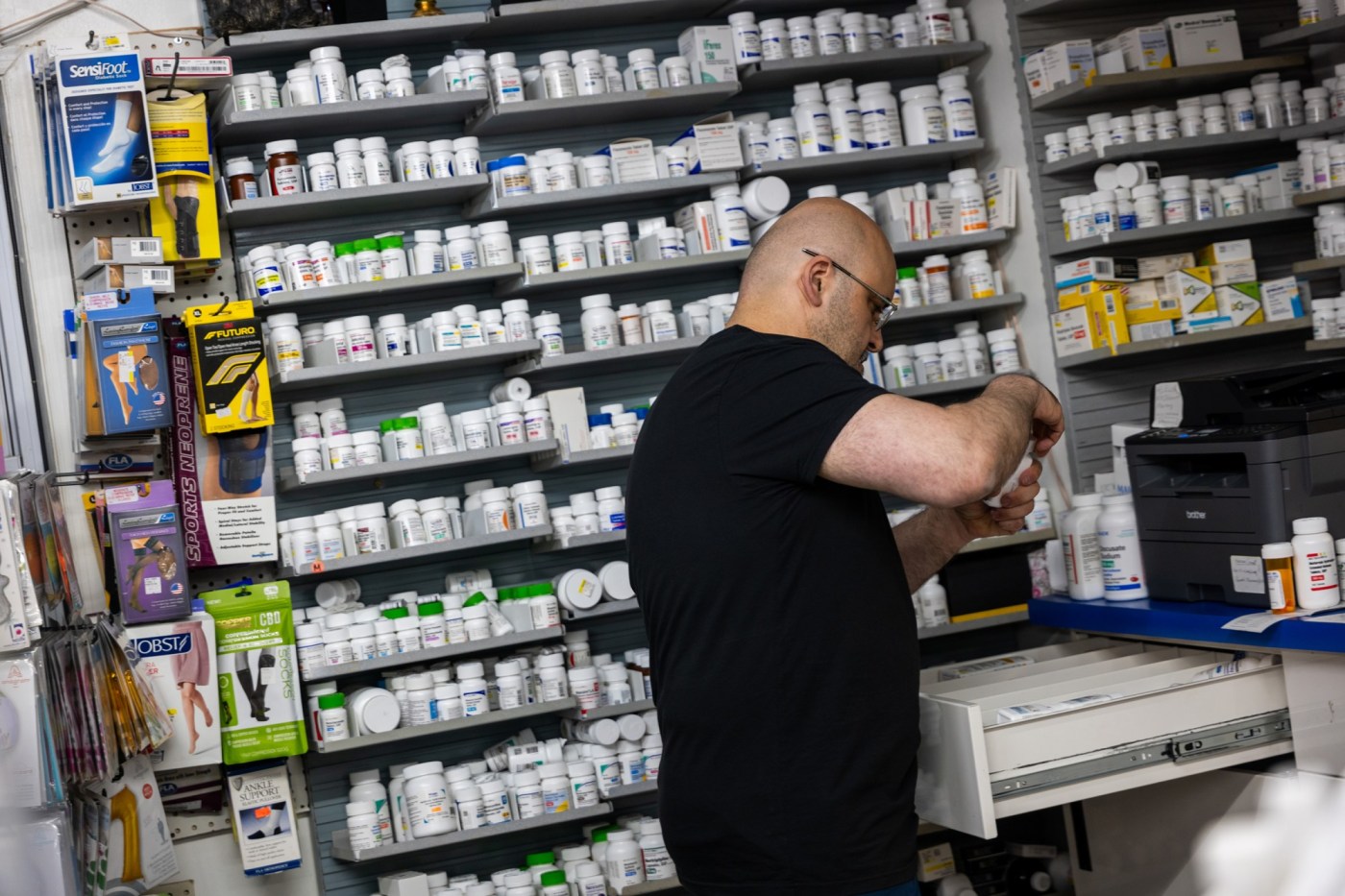
US drug price measure to cut costs by $7.5 billion in 2026
John Tozzi, Fiona Rutherford and Robert Langreth | (TNS) Bloomberg News
WASHINGTON — The U.S. government’s landmark drug price negotiations will save Americans $7.5 billion in its inaugural year, the Biden administration said, a first step toward driving down its world-leading pharmaceutical bill.
The savings will be split between senior citizens, who will fork out $1.5 billion less in out-of-pocket costs for ten medications, and the government, as its health insurance program for the elderly will pay $6 billion less to treat heart failure, blood clots, diabetes and other conditions in 2026.
Some of the world’s biggest medicines made by leading drug companies will see prices cut by 38% to 79%, according to a fact sheet put out by the Centers for Medicare and Medicaid Services.
Diabetes drugs saw the biggest reductions, including a 79% discount off the list price for Merck & Co.’s Januvia and a 68% cut for AstraZeneca Plc’s Farxiga. Amgen Inc.’s Enbrel rheumatoid arthritis injection was hit with a 67% reduction off its 2023 list price. The smallest price cut was for AbbVie Inc.’s leukemia drug Imbruvica, with a 38% price reduction.
Those figures overstate the actual savings that will be achieved, as drugmakers already negotiate behind-the-scenes discounts with private companies that run Medicare drug plans. Those rebates can be substantial, particularly for crowded categories like diabetes. For conditions like cancer, the existing discounts are typically smaller, perhaps explaining why the one cancer drug on the negotiated list was hit with the smallest discount.
Astra said it will accept the price reductions so patients can get its drugs. AbbVie said in a statement that the IRA does nothing to benefit patients and will harm the long-term development of new drugs. Merck and Amgen didn’t immediately respond to requests for comment.
It wasn’t immediately clear how much additional discounts the individual companies are providing over their existing net prices. But overall, CMS said the discounts for 2026 would have resulted in a 22% savings over the existing net prices that were in place last year.
Johnson & Johnson said in a statement that the IRA would ultimately result in higher costs and restricted access to medicine for patients. Bristol Myers Squibb Co. said the negotiated price does not reflect the value of Eliquis, its blockbuster blood-thinner, and that the law did not do enough to limit patients’ out-of-pocket costs. Novo Nordisk A/S took issue with Medicare’s decision to set a single price for more than one of its insulin products but said in a statement it would comply with the law.
The new policy, sought by Democrats for years, is a victory for the administration the week before the party’s national convention begins. It uses the buying power of the Medicare program to cut medication costs and may slash the federal deficit by $237 billion over a decade, according to the Congressional Budget Office.
“Today’s announcement represents a huge first in the history of health care in the United States that is decades in the making,” said Centers for Medicare and Medicaid Services Administrator Chiquita Brooks-LaSure in a briefing Wednesday evening.
Before the Inflation Reduction Act, Medicare didn’t have the authority to negotiate for drugs on behalf of its 66 million members. Instead, costs were determined by private negotiations between prescription drug plans and pharmaceutical companies, leading to some of the highest prices in the world.
Critics have long said that leaving those negotiations to private plans squandered Medicare’s purchasing muscle. They advocated for a stronger U.S. government role in setting prices, which many national health plans in other countries have.
The law lets Medicare cut prices for drugs that have been on the market for a long time but don’t face low-cost generic competition. The second cycle will include as many as 15 additional drugs, CMS announced in May.
“Americans pay way too much for their prescription drugs,” said Health and Human Services Secretary Xavier Becerra. “That’s what makes today’s announcement so historic.”
Politics
The newly negotiated prices are required by law to be made public by Sept. 1. The early announcement gives the administration a chance to tout one of its biggest accomplishments the week before the Democratic party anoints Vice President Kamala Harris as its candidate to succeed President Joe Biden.
Harris, who broke the tie when Republicans in the Senate voted against the law, is expected to lay out a rough plan to further lower costs in a speech Friday, one that’s sure to include drug pricing as an issue.
Biden has touted the drug price elements of the Inflation Reduction Act as a central achievement that will save money for the government and seniors, while squeezing companies that charge rising prices for older therapies. Medical costs have been a key focus for the administration, which capped some insulin costs at $35 a month.
Still, Republicans have attacked the administration over inflation, and many Americans are unaware of the provision that allows for Medicare price negotiation, according to a KFF poll in May.
Drug prices are a crucial issue for seniors, who largely get their health insurance through the government’s Medicare program for the elderly. They are among the most likely to cast ballots on Election Day, and a group where Democrats hope to make inroads. The White House has repeatedly evoked its efforts on prescription drugs as a defense to Republican presidential candidate Donald Trump’s frequent criticism of post-pandemic inflation.
Price Comparisons
A core question hanging over the negotiations is how the new prices will compare to what Medicare prescription drug plans pay today. Those plans, administered by private insurers, get rebates and other discounts from manufacturers that cut the net cost of medications. The rebates are often used to reduce premiums.
But the net prices aren’t public. That makes it hard to evaluate how Medicare’s new negotiated rates compare to the current costs, including the discounts now available.
Analysts at JPMorgan suggested they could be significantly cheaper than current net prices — 40% lower on average, according to an Aug. 13 research note sent to investors.
“We would not be surprised to see some volatility to the extent discounts come in above/below this level,” the analysts led by Chris Schott wrote.
Others suggested the true impact on drug companies may be more muted than the hoopla around the announcement suggests. The effect on revenues “may be less than originally anticipated or feared,” Evan Seigerman of BMO Capital Markets wrote on Aug. 13.
Industry Reaction
The pharmaceutical industry opposed the policy, calling it a sham. Executives argued that it wasn’t a negotiation but a strong-arm tactic that effectively allowed the government to set prices unilaterally. Several companies are challenging it in court, so far without success.
Despite the outcry, many companies involved in the first round of negotiations told investors on earnings calls that they don’t expect it to have a substantial effect on their financial results in the near term.
That could change as the number of drugs facing price reductions increases in the coming years. Companies have said taking money out of the system will diminish incentives to develop new treatments. Some say they have already shelved research because of the law.
The particulars of the policy, which grants longer periods of exclusivity for complex biological drugs compared to small molecules, have also changed some of the incentives.
—With assistance from Josh Wingrove, Justin Sink and Damian Garde.
(Updates with details of price cuts starting in third paragraph)
___
©2024 Bloomberg L.P. Visit bloomberg.com. Distributed by Tribune Content Agency, LLC.


